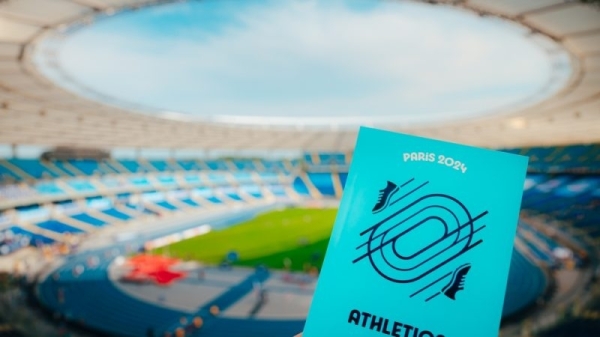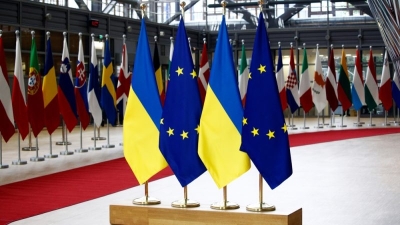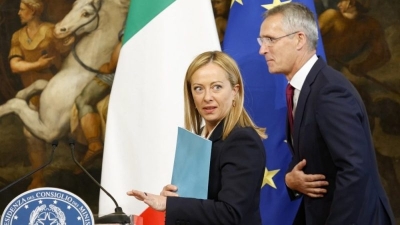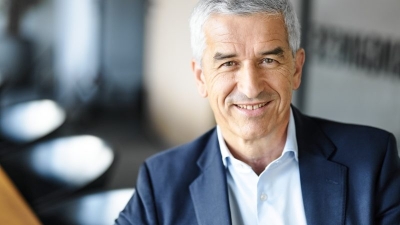Paris Olympic Village getting climate fit for 2050

Paris is getting climate fit for July’s Olympic Games. The Olympic Village is vaunted as an experimental model showcasing adaptations France needs for 2050’s climate shift, and Olympic athletes could be modelling future living for the rest of Europe.
According to Météo France, summer temperatures in Paris in 2050 will be similar to those currently observed in southern Spain.
“Roughly speaking, these will be the temperatures observed during the 2003 heatwave in France,” explained Nicolas Ferrand, Executive General Manager of SOLIDEO, in charge of Olympic construction, at the Buildings and Climate Global Forum held in Paris on 7-8 March.
In the run-up to the Olympic Games, adaptations in the building sector will be crucial, if not vital, to avoid the health consequences of increasingly frequent extreme heat and intense cold.
To prepare for this, the Olympic Games is an experiment to evaluate the most effective solutions to manage climate change living adaptations.
The city of Paris, together with several other French local authorities, will host the global event between the end of July and the beginning of September. As is the case for every edition of the Games, a site known as the “Olympic Village” will be set aside for the athletes.
Bioclimatic innovations
The French authorities have chosen to build a village of 300,000 m2, a complex of buildings and green islands straddling three communes north of Paris, in line with a new principle of guaranteeing urban comfort in the climate of 2050.
To this end, the village features several innovations, designed according to bioclimatic principles.
On the building side, the 23,500 Olympic and Paralympic athletes and their staff will be accommodated in buildings designed as tubes rather than bars, to ensure better ventilation between buildings. The orientation of the buildings is designed to ensure that the heat is not overwhelming, as is the case with the adjustable sunshades.
Some roofs will be planted with vegetation and/or fitted with solar panels.
One of the major innovations is that the buildings will not be equipped with air conditioning. Instead, more than 8,000 fans and reversible floors will be installed, capable of channelling heat in summer and cold in winter.
6° of separation
Finally, the insulation is designed to ensure that there will always be a 6°C difference between the inside and outside of the buildings, promises the builder, SOLIDEO.
“Thanks to all the measures taken in the design of the buildings themselves, and according to a study we launched on the impact of heatwaves on the athletes’ village, we are achieving the target of 23-26° at the hottest time of the day” in 95% of the 3,200 rooms, explains the Olympic Committee.
However, “despite the building adaptations we’ve planned, particularly about insulation, we’re aware that the future holds more and more climatic crises in store for us,” acknowledges Lilian Tretout, head of the environmental excellence project at SOLIDEO, in Les Echos.
Some situations will be so intense that building adaptations will not be enough. To this end, SOLIDEO has set up ‘refuge areas’, public spaces that can be transformed, if necessary, into places of welcome and assistance, particularly for the most vulnerable.
Greenery and geothermal energy
To further mitigate the effects of the heat, the village has given way to seven hectares of green islands. SOLIDEO ensures that the substrates and species planted respect the pre-existing characteristics of the site as much as possible.
Green roofs can also host biodiversity, and store rainwater and cool buildings by limiting reverberation. These installations are also designed to recover part of the rainwater to nourish their own vegetated surface or the islands on the ground.
Finally, the village will also benefit from the geothermal power plant inaugurated at the end of December 2023 in Saint-Denis.
Conversion
Adapted to most of the climatic situations simulated for 2050, the Olympic Village is destined to survive. After its use for sporting purposes, it will be rehabilitated as a new district in 2028, capable of accommodating over 6,000 residents and 6,000 office workers.
“The Olympic Games are a milestone in urban construction. We are ready today for the challenges of the 21st century,” concluded Ferrand.
[By Paul Messad I Edited by Brian Maguire | Euractiv’s Advocacy Lab ]
Read more with Euractiv

EU’s 2050 net zero goals at risk as EV rollout faces setbacks
By Julia Payne
BRUSSELS, April 22 (Reuters) — The EU needs to rethink its policies to make a 2035 ban on new petrol car sales feasible as electric vehicles (EVs) remain unaffordable and alternative fuel options are not credible, the EU’s external auditor said, jeopardising its 2050 climate goals.
The 27-member bloc wants to achieve net zero emissions by 2050, meaning it will emit no more than it can balance out with measures to remove carbon dioxide from the atmosphere such as reforestation programmes.
It hopes to meet its targets with the widespread use of electric vehicles as road transport accounts for nearly a quarter of its emissions.
The EU wants to have at least 30 million zero-emission cars on European roads by 2030, or about 12% of the current car fleet. However, the European Court of Auditors (ECA) cautioned the bloc may create new economic dependencies and hurt its own industry.
As it stands, high EV production costs in Europe means the bloc will have to rely on cheap imports, mainly from China, if it sticks to the 2035 goal. China accounts for 76% of EV battery output compared with the EU that represents less than 10% of production globally.
"The EU faces a conundrum, how to meet goals without harming industrial policy and hurting consumers," Annemie Turtelboom, an ECA member, told reporters. She added that 2026 will be a key year for a policy review.
Tesla is the leading EV maker in the United States and Europe but has come under pressure to slash prices due to competition from Chinese cars. Similarly, European carmakers like Stellantis that owns Peugeot and Fiat, and Renault are now racing to develop their own affordable EV models.
While EV purchases have been on the rise in the EU, the increase was largely due to subsidies. Further, charging infrastructure is lacking with 70% of charging points concentrated in just Germany, France and the Netherlands. The EU is falling short of its aim to set up 1 million charging stations across the bloc.
"(EV) prices would need to halve and subsidies do not seem to be a viable tool ... Batteries alone already costs 15,000 euros when produced in Europe," Turtleboom added when speaking to reporters.
Alternative fuels like biofuels, e-fuels or hydrogen remain uneconomic at commercial scale.
Adding to the difficulties in hitting its 2050 goal, the ECA said the EU has not cut real CO2 emissions from cars despite new testing standards and measures such as Euro 6.
In a January report, the ECA attributes this to the gap between laboratory tests and real world emission tests. The Commission was relying on lab tests, which created a skewed version. In reality, average emissions from diesel cars are the unchanged from 2010 at 170 grams of CO2 per kilometre while petrol cars are just down 4.6% at over 160 g CO2/km.
"Despite lofty ambitions and strict requirements, most conventional cars still emit as much CO2 as 12 years ago." Nikolaos Milionis, ECA member, said in a statement, attributing part of the failure to a rise in the average weight of cars. (Reporting by Julia Payne; editing by David Evans)



